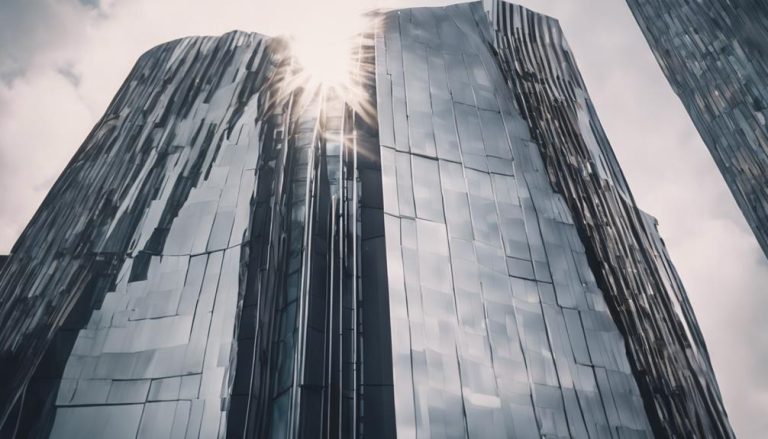
Why Stainless Steel Construction Is the Future of Building?
Stainless steel construction is essential for the future of building due to its unmatched strength, durability, and flexibility in design. It offers cost-effectiveness, longevity, and efficiency in construction processes. The aesthetic appeal it brings to buildings is unparalleled, elevating their prestige and value. With ongoing innovations like 3D printing and PVD coatings, stainless steel opens up exciting possibilities. Common alloy families like austenitic, duplex, and martensitic steel play a vital role in architecture. Their applications range from bridges to modern roofs, ensuring safety and resistance against corrosion. The logic behind building with stainless steel lies in its reliability, strength, and adaptability.
Key Takeaways
- Superior strength and durability for high load-bearing capacities and harsh environments.
- Versatile in architectural designs, enabling unique and visually striking structures.
- Cost-effective with minimal maintenance requirements and extended service life.
- Efficient construction processes with high strength-to-weight ratio and corrosion resistance.
- Aesthetic applications enhance design, prestige, and value of buildings.
Superior Strength and Durability
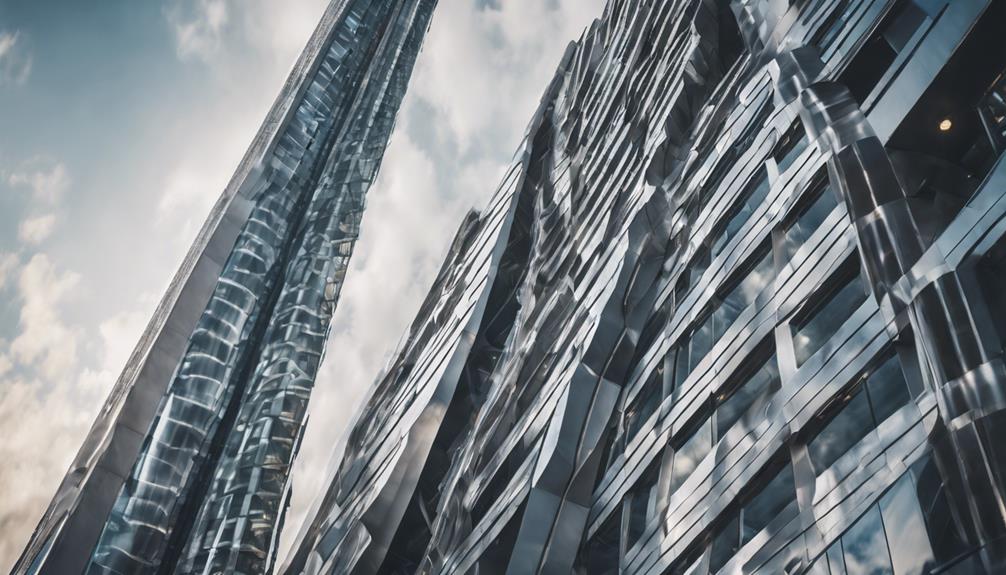
With unmatched strength and durability, stainless steel construction outperforms traditional materials in building applications. Stainless steel is renowned for its exceptional structural integrity, making it a preferred choice for steel constructions that require high load-bearing capacities. Compared to carbon steel, stainless steel structures exhibit superior strength, guaranteeing enhanced safety and reliability in various construction projects. The use of stainless steel in structural steel construction results in buildings that can withstand harsh environmental conditions and external forces, reducing the need for frequent maintenance and repair.
Furthermore, stainless steel alloys like duplex stainless offer even higher yield strength without compromising on corrosion resistance, providing an added advantage for structural applications. This increased durability translates to reduced maintenance costs over time, making stainless steel a cost-effective long-term solution for construction projects. The longevity of stainless steel buildings not only guarantees sustainability but also offers a future-proof option for modern building designs that prioritize strength and resilience.
Versatility in Architectural Designs
Stainless steel’s versatility in architectural designs allows architects to achieve unparalleled creativity and innovation in building aesthetics. With a wide range of finishes and textures available, steel construction materials enable the creation of unique and visually striking designs that stand out in the architectural landscape. The strength-to-weight ratio of stainless steel further facilitates the construction of complex and innovative architectural structures while minimizing material usage, promoting sustainability in building practices.
Moreover, stainless steel’s resistance to corrosion and fire enhances durability and safety, making it an ideal choice for building exteriors, facades, and interior elements. Architects can leverage the material’s recyclability and sustainability to align with modern trends focused on eco-friendly and long-lasting construction practices. Additionally, the versatility in fabrication techniques allows for the customization of intricate architectural elements, adding a touch of sophistication and elegance to building designs. Stainless steel truly opens up a world of possibilities for architects to push boundaries and create iconic structures that redefine architectural norms.
Cost-Effectiveness and Longevity
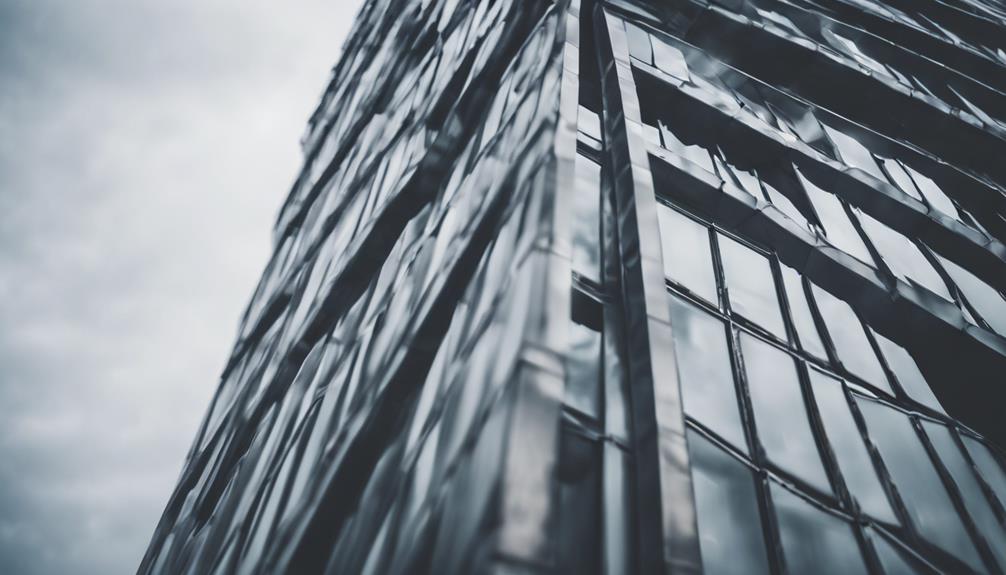
Architects and builders recognize the cost-effectiveness and longevity of stainless steel construction as key factors that contribute to its widespread adoption in modern architectural projects. Stainless steel construction offers significant cost-effectiveness over time by virtue of its durability and minimal maintenance requirements.
The inherent strength and corrosion resistance of stainless steel structures reduce the need for frequent repairs or replacements, resulting in long-term cost savings. This longevity guarantees a prolonged lifespan for buildings, further enhancing the cost-effectiveness of stainless steel construction. Additionally, the extended service life of stainless steel structures leads to lower life cycle costs, making it a financially sustainable choice for construction projects.
Although the initial investment in stainless steel construction may be higher, the returns in terms of reduced maintenance expenses and prolonged durability make it a prudent financial decision in the long run. Overall, the cost-effectiveness and longevity of stainless steel construction highlight its appeal and viability in modern architectural endeavors.
Efficiency in Construction Processes
Efficiency in construction processes is paramount in modern architectural projects, driving the adoption of innovative techniques and materials to streamline building operations. Stainless steel construction offers notable advantages in this aspect.
The material’s high strength-to-weight ratio reduces the need for additional support structures, simplifying construction and saving time. Prefabricated stainless steel components further expedite construction timelines by minimizing on-site labor requirements. Additionally, stainless steel’s corrosion resistance eliminates the need for frequent maintenance, ensuring long-term cost savings and enhancing building durability.
Advanced fabrication techniques enable the realization of intricate and complex designs with precision, expanding architectural possibilities. The versatility of stainless steel also supports sustainable construction practices, contributing to eco-friendly building solutions for the future.
Aesthetic Applications in Buildings
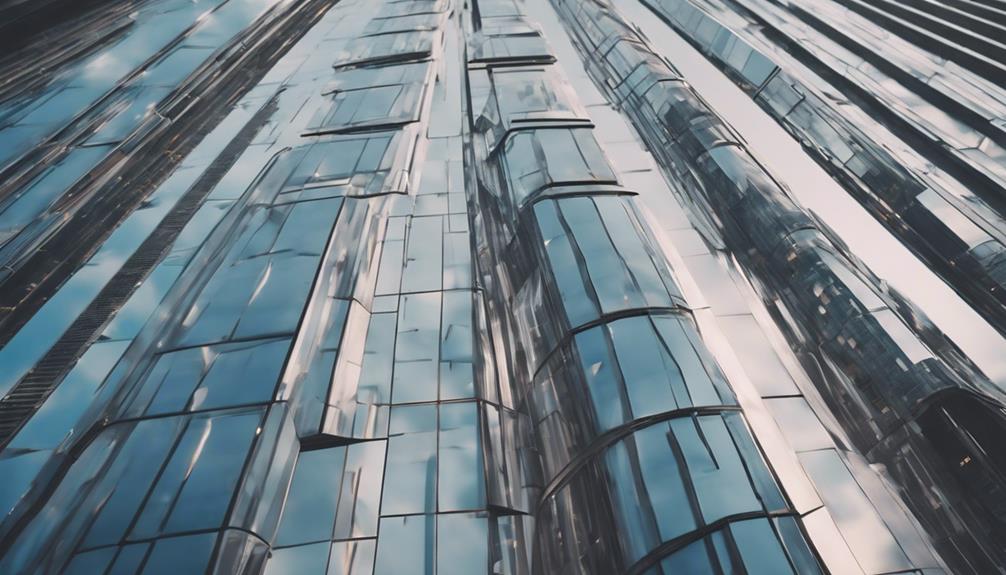
The aesthetic appeal of stainless steel in construction extends beyond its practical benefits, playing a significant role in enhancing the overall design and visual impact of buildings worldwide. Stainless steel is a popular choice for cladding, curtain walls, roofing, and canopies due to its modern and sleek appearance, as seen in numerous famous buildings globally.
Its use in interior design elements also helps create a contemporary and sophisticated atmosphere within buildings. Additionally, stainless steel can elevate the prestige and value of structures, making them highly sought after for upscale civil and residential projects.
Architects and designers prefer stainless steel for its ability to produce visually striking and modern buildings that stand out in the built environment. By incorporating stainless steel into various architectural elements, buildings can achieve a timeless and elegant aesthetic that appeals to a wide range of audiences and maintains a cutting-edge appearance for years to come.
Innovations and Exciting Applications
Exciting advancements in stainless steel construction technology continue to revolutionize the industry, offering novel solutions for complex architectural designs and enhanced structural integrity. One such innovation is the utilization of 3D printing, which enables the creation of intricate shapes and structures that were previously challenging to achieve.
Additionally, the application of PVD coatings to stainless steel not only enhances its durability but also allows for a wide range of aesthetic possibilities by incorporating metals like titanium and copper.
Moreover, the development of advanced stainless steel materials such as TWIP and TRIP steels has greatly contributed to the industry by providing high strength along with unique properties that cater to specific project requirements.
Looking ahead, ongoing research is focused on exploring new applications for stainless steel, particularly in the fields of smart material properties control and 3D printing. These continuous innovations highlight the versatile nature of stainless steel construction and its promising future in shaping the buildings of tomorrow.
Revamping Architecture With Stainless Steel
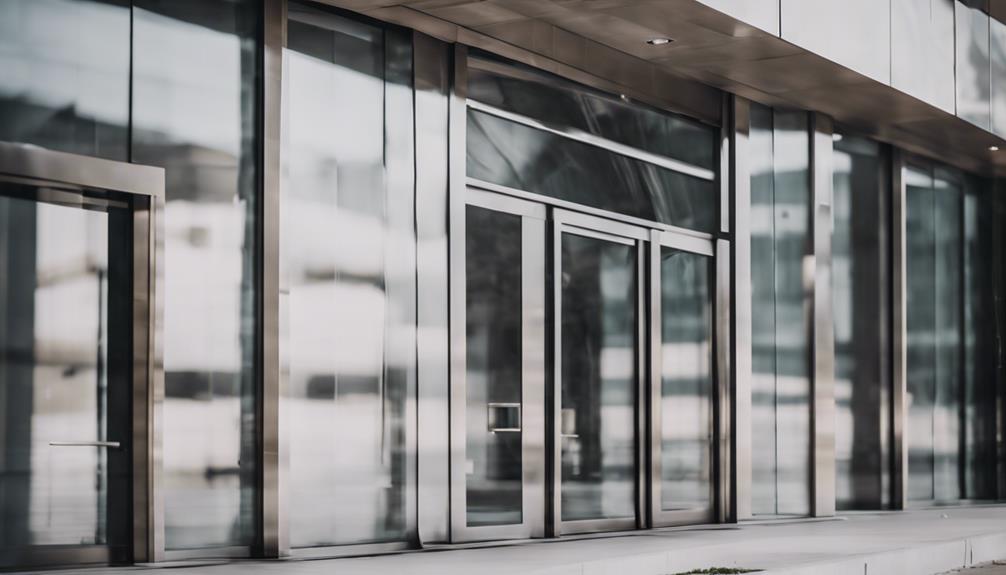
In addition, the flexibility of stainless steel allows it to be molded into any desired form, enabling architects to create innovative and unique structures.
Composed primarily of iron, chromium, and nickel, with the addition of other metals for specific aesthetics, stainless steel alloys provide structural resilience to endure extreme temperatures.
Austenitic stainless steel is well-suited for cold climates due to its strength and corrosion resistance, while duplex stainless steel is ideal for warmer regions, offering a balance of toughness and flexibility.
Additionally, the easy maintenance and cleaning requirements of stainless steel make it a popular choice in building design, reducing long-term upkeep costs.
Common Alloy Families in Architecture
Within architecture, various alloy families, including austenitic, ferritic, martensitic, duplex, and precipitation hardening stainless steel, play essential roles in shaping the structural integrity and design versatility of buildings.
Austenitic stainless steel stands out for its non-magnetic properties, exceptional strength, corrosion resistance, and ability to withstand high and low temperatures, making it ideal for architectural applications where these qualities are paramount.
On the other hand, ferritic stainless steel, despite its magnetic nature, is less common in architecture, finding more extensive use in culinary and automotive industries due to its specific properties.
Martensitic stainless steel, characterized by high carbon and chromium content, finds its niche in the medical and food sectors for manufacturing cutlery and surgical instruments.
Duplex stainless steel, a combination of austenitic and ferritic alloys, offers enhanced strength, density, and stress corrosion resistance, making it a valuable choice for demanding architectural projects.
Each alloy family brings its unique characteristics to the table, catering to different architectural requirements and contributing to the advancement of stainless steel construction in the building industry.
Application Uses in Various Structures
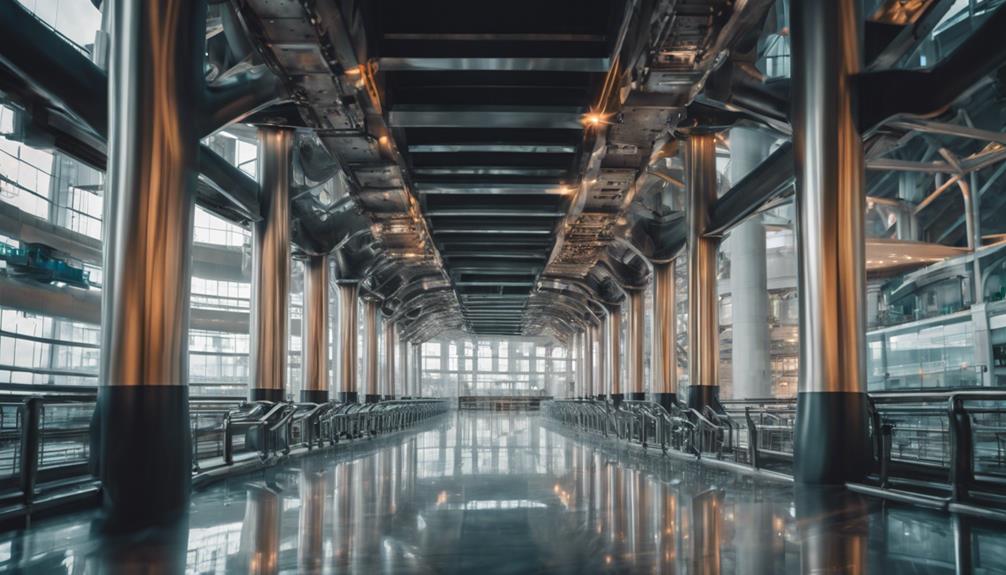
Stainless steel finds extensive application across various structures, showcasing its durability, design versatility, and corrosion resistance in diverse architectural contexts.
In bridge construction, stainless steel is a popular choice due to its robustness and elegant aesthetics. Its ability to withstand harsh environmental conditions makes it an essential material in the design of warehouses for ports and piers, where resistance against corrosion from seawater is vital for longevity.
Additionally, modern roofs benefit from stainless steel due to its energy-saving properties and long-lasting performance. Stainless steel handrail fabricators are frequently employed in building designs to comply with safety standards such as the Americans with Disabilities Act (ADA), ensuring both functionality and aesthetic appeal.
Logic Behind Building With Stainless Steel
Building with stainless steel is underpinned by a strategic emphasis on its structural integrity, design flexibility, and longevity, making it a preferred choice for architects and engineers in modern construction projects.
Stainless steel’s widespread use in building construction extends to both structural elements and finishing details, offering architects, engineers, and customers a versatile material for interior and exterior designs.
The convenience of stainless steel products such as beams, angles, and custom shapes arriving ready for on-site assembly further enhances its appeal in construction projects.
Additionally, the focus on utilizing stainless steel in supporting elements like floors, walls, and partitions underscores its reliability and strength in various structural applications.
Compared to traditional materials like carbon steel, stainless steel provides superior durability and yield strengths, ensuring the longevity and robustness of buildings constructed with this advanced material.
The logical choice of stainless steel in construction is rooted in its exceptional properties that meet the demanding requirements of modern architectural and engineering standards.
Frequently Asked Questions
Why Is Stainless Steel Good for Building?
Stainless steel is an excellent choice for building due to its natural corrosion resistance, low maintenance requirements, and cost-effectiveness. Different grades offer varying levels of protection, ensuring durability with proper care. Its use enhances building aesthetics and value.
What Is the Future of Stainless Steel?
The future of stainless steel embodies innovative technologies, increased sustainability, and expanded applications in construction. With a focus on versatility, strength, and ongoing research, stainless steel is poised to meet evolving architectural demands and maximize its benefits in diverse building projects.
Why Steel Is Best for Construction?
Steel is best for construction due to its high durability, strength, and versatility. Stainless steel, in particular, offers superior corrosion resistance and longevity, reducing maintenance costs. Its use in various structural elements enhances architectural possibilities and optimizes building design.
Why Is Steel Important in Modern Architecture?
Stainless steel is essential in modern architecture due to its durability, corrosion resistance, and aesthetic appeal. Steel’s high strength-to-weight ratio allows for innovative designs, while its versatility in fabrication and finishing makes it a preferred material for architects and designers.
Conclusion
To sum up, stainless Steel Constructions offers superior strength, durability, versatility, cost-effectiveness, and efficiency in building processes. Its aesthetic applications and ability to revamp architecture make it a popular choice in the industry.
With various alloy families and application uses in different structures, stainless steel is poised to be the future of building due to its unmatched qualities and benefits.
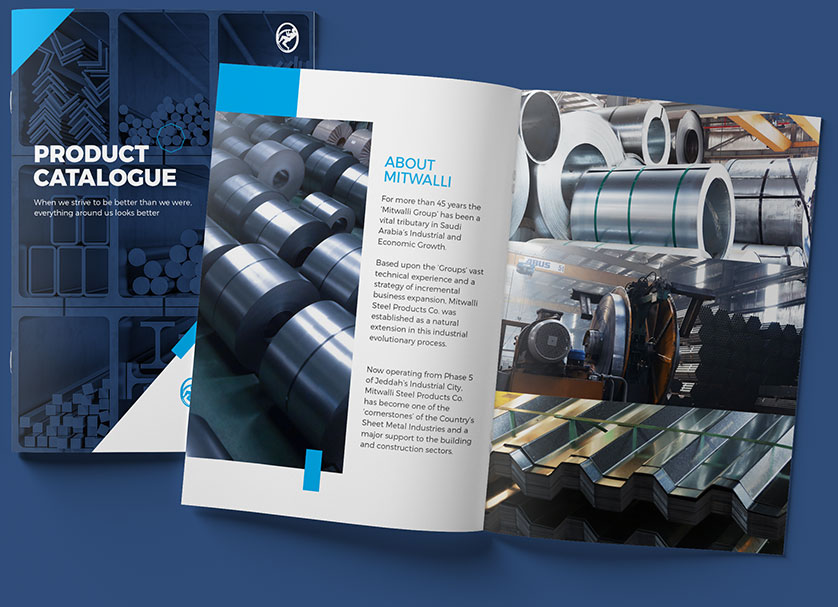
Add New Comment
Deprecated: File Theme without comments.php is deprecated since version 3.0.0 with no alternative available. Please include a comments.php template in your theme. in /home/wwwmsp/public_html/wp-includes/functions.php on line 6121